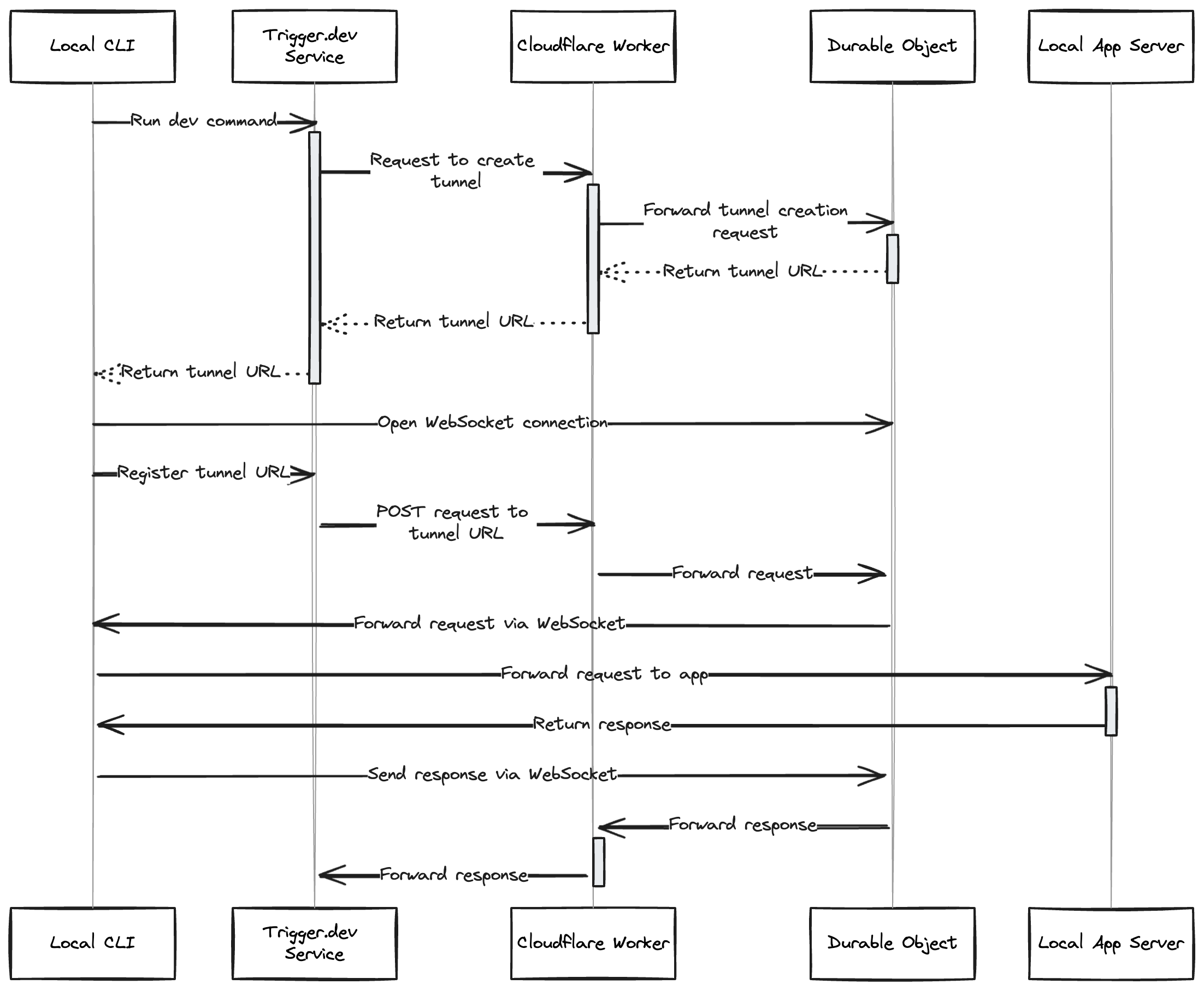When working with Trigger.dev in local development, we automatically open a free ngrok tunnel to your local app server so the Trigger.dev server can send requests to your local app server. Unfortunately free ngrok tunnels are restricted to 120 requests per minute, and if exceeded will return a 429 error.
Starting in @trigger.dev/[email protected], we have dropped ngrok in favor of a custom tunneling solution which we're calling "yalt.dev" (Yet Another Local Tunnel). Yalt.dev is a tunneling solution built on top of Cloudflare Workers and Durable Objects that is designed to be used with the Trigger.dev Cloud service, and drops all limits on the number of requests that can be sent to your local app server.
How to use it
If you are on the latest version of the CLI, you can run @trigger.dev/cli@latest dev as you normally would, and the CLI will automatically use yalt.dev instead of ngrok. Currently yalt.dev is only available to users of the Trigger.dev Cloud service, so if you are self-hosting the Trigger.dev server, the CLI will automatically fallback to using ngrok.
You can also continue to use your own custom tunnel URL by passing the -t flag to the CLI, for example @trigger.dev/cli@latest dev -t mycustomtunnel.com.
How it works
When you run the @trigger.dev/cli@latest dev command on your local machine, the CLI makes a request to the Trigger.dev cloud service to create a new yalt.dev tunnel, returning the tunnel URL (which looks like <tunnelId>.yalt.dev). That tunnel URL resolves to a Cloudflare Worker that we've deployed (and you can view the source code for it here).
The CLI will then open a new WebSocket connection (powered by partysocket 🎈) which is forwarded to a Durable Object. Finally, the CLI will then register that tunnel URL with your Trigger.dev endpoint.
So now that the tunnel setup is complete, when the Trigger.dev server wants to send a request to your endpoint, it will make a POST request to the <tunnelId>.yalt.dev URL, which again will be handled by that same Cloudflare Worker, which forwards it to tunnel's Durable Object instance, which has in memory the WebSocket connection to your local CLI. The CLI will then receive the request and forward it to your local app server, and respond back to the WebSocket connection with the response from your app server.


